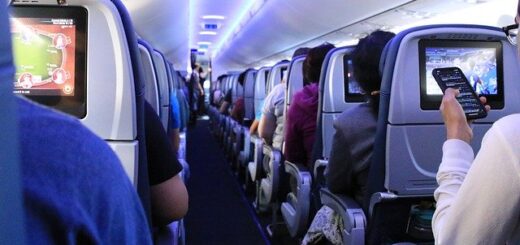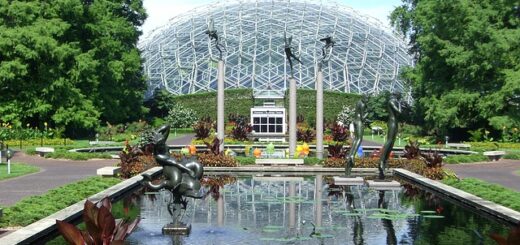Tiny Home Stays for Digital Nomads: Better Than a Hotel for Remote Work?
As the remote work trend continues to flourish, digital nomads are redefining what it means to live and work freely. For many, traditional hotel stays no longer fit the bill—too sterile, too expensive, and often too uninspired for weeks of continuous productivity. That’s why tiny home stays are quickly becoming the go-to accommodation for modern professionals. They offer the perfect blend of comfort, affordability, and creativity that hotels struggle to match. But what exactly makes these compact dwellings such an excellent option for digital nomads? Let’s explore how tiny homes are changing the way remote workers travel, live, and work.

The Rise of Tiny Homes in the Remote Work Era
Over the past decade, tiny homes have gone from a curiosity on lifestyle TV shows to a legitimate housing and travel choice. With many professionals choosing location independence, these sustainable, minimalist spaces provide all the essentials—without the high costs of long-term rentals or hotels. For digital nomads, who thrive on flexibility, tiny homes offer a stable yet mobile way of life.
Unlike hotel rooms designed for short stays, tiny homes often include full kitchens, cozy living areas, private patios, and reliable high-speed Wi-Fi. This makes them ideal for longer-term stays, especially in destinations where nature meets connectivity—like scenic national parks, beach towns, or even small mountain communities. The layout and solitude of these homes also foster focus, helping remote workers manage their tasks without the constant interruptions common in busy hotels.
Comfort and Productivity Combined
One of the biggest challenges digital nomads face while traveling is balancing comfort and productivity. Tiny homes resolve both issues in compact but clever ways. The design of a well-built tiny home maximizes space through multifunctional furniture and efficient layouts that provide separate zones for work, rest, and relaxation.
For remote work, the quiet environment is a priceless perk. Most tiny homes are located away from high-traffic tourist areas, surrounded by peaceful scenery that stimulates creativity. A morning spent replying to emails while sipping coffee on a porch overlooking the mountains is far more rewarding than sitting at a hotel desk between housekeeping knocks and hallway noise.
Another key benefit is the independence tiny homes provide. Guests can prepare home-cooked meals, work at odd hours, and decorate or personalize their temporary space for mental comfort. These small freedoms have a surprisingly significant impact on focus and overall well-being while working remotely.
Cost Efficiency and Sustainability
When you’re a digital nomad, expenses add up quickly—especially lodging. Tiny home stays often cost less than extended hotel stays, particularly in popular destinations. Beyond affordability, tiny homes also appeal to the growing eco-conscious mindset among remote workers. They require less energy, encourage minimal waste, and often feature eco-friendly utilities such as solar power or composting systems.
For long-term travelers, these sustainable features align well with a more straightforward, more mindful way of living. Instead of constantly managing travel budgets or worrying about resource waste, nomads can focus on their work and personal growth. Additionally, staying in a tiny home gives travelers a sense of belonging to the local area—something chain hotels rarely achieve.
Strong Wi-Fi, Strong Workflow
Years ago, a significant drawback of staying off-grid was unreliable internet. Today, that’s no longer a problem. Most modern tiny home rentals cater specifically to remote workers, offering fast Wi-Fi, charging stations, and potent cellular signal boosters. Many even integrate smart home technology, allowing guests to adjust lighting and temperature through mobile apps for an optimized workspace.
For those conducting video meetings or creating content, a stable internet connection is crucial. With proper planning, tiny homes provide the infrastructure of a home office—without sacrificing mobility or connection to nature. The result is a remote work experience that feels both productive and restorative.
Community and Inspiration
Hotels often feel transactional—you check in, stay, and leave. Tiny home communities, however, foster a more profound sense of connection. Many are designed around shared values like sustainability, creativity, and self-sufficiency. This creates a supportive atmosphere where digital nomads can meet others living similar lifestyles.
From group hikes to shared co-working spaces, tiny home villages can become hubs of inspiration. Instead of feeling isolated, remote workers often find themselves energizing ideas through conversation with fellow travelers, creators, and entrepreneurs. This human connection can make all the difference during long stretches of remote work.
Perfect Locations for Remote Work Bliss
Tiny home stays are now available in nearly every region, but specific settings lend themselves particularly well to digital nomad life. Coastal hideaways offer ocean views that make video conference backgrounds look spectacular. Mountain retreats deliver tranquility, fresh air, and trails for mental resets after long projects. Desert and canyon locations provide unmatched natural beauty and mild climates ideal for outdoor workspaces.
For instance, the area around Utah’s Zion National Park has become a hotspot for remote workers seeking balance. The scenery encourages focus while the local community fosters creativity. It’s not hard to see why Zion tiny homes outshine hotels for digital nomads seeking a peaceful, productive stay.
The Future of Remote Living
As work becomes more location-independent, accommodations will continue to evolve. Tiny homes represent this new era of intentional living—where work, travel, and sustainability blend seamlessly. They’re not just a budget choice; they’re a lifestyle statement about freedom, simplicity, and purpose.
For digital nomads, trading hotel walls for a panoramic window in a tiny home isn’t just about saving money. It’s about choosing an experience that nurtures creativity, prioritizes comfort, and supports a sustainable work-life balance. In that sense, tiny homes are indeed better than hotels—not only as a place to stay but as a way to live and work with meaning.



















